EDUCATION - ADULT LEARNING
Conservancy Speaker Series
Learn What Makes Catalina Unique
Join us for Conservation Conversations, a premier event series presented by the Catalina Island Conservancy, featuring renowned thought leaders, scientists, and changemakers at the forefront of conservation. Each session dives into critical environmental issues, groundbreaking research, and innovative solutions to protect and sustain our planet. This series occurs both in-person at the Trailhead Visitor Center and streams live on-line.
2024 Recordings
January 2024
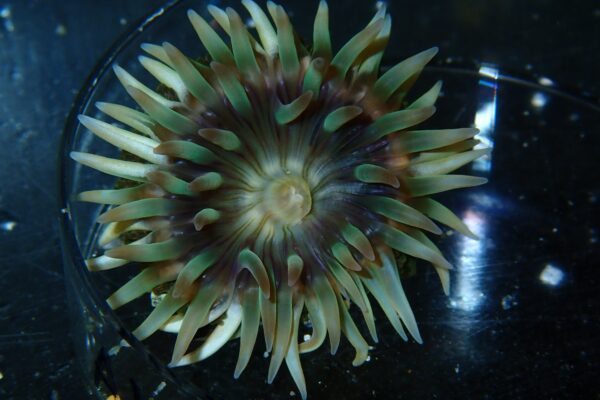
“What do California’s intertidal anemones have to do with coral reefs?” with Carly Kenkel Ph.D, Wilford & Daris Zinsmeyer Early Career Chair in Marine Studies and Assistant Professor of Biological Sciences at the University of Southern California.
The predicted magnitude of climate change will exceed the current physiological limits of many species. The ability to acclimate, adapt, or migrate could determine species persistence in future oceans, but this response may be further complicated by ecological interactions, such as symbioses, where the fitness of one species is dependent on another. California’s intertidal anemones engage in a symbiosis with dinoflagellate algae, identical to their coral cousins, but unlike coral these anemones can withstand a remarkable range of temperatures without exhibiting visible signs of stress. This talk will discuss how we’re using these local anemone models to better understand capacity and constraints on temperature tolerance in these symbiotic systems and how that information can be applied to conservation management.
View LectureFebruary 2024
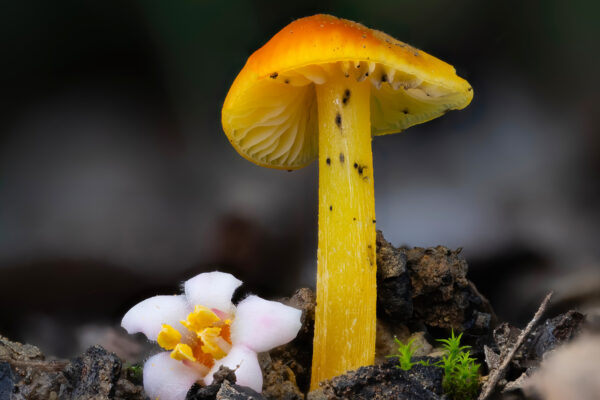
“Fascinating Fungi of California’s Chaparral Shrublands” with Stu Pickell, mycologist, acclaimed photographer, and Vice President of the Los Angeles Mycological Society.
Chaparral is often overlooked as simply the dry and drab backdrop of the Southern California landscape. This is especially true of mycologists and mushroom hunters who have historically focused on woodlands when searching for mushrooms. The resulting underdocumentation represents an enormous gap in our knowledge of the state’s biodiversity and our understanding of the ecology in these plant communities. In this talk Stu Pickell will share the world of fascinating and colorful fungi that one finds in the California’s shrublands after rejecting this sylvan bias, discussing the importance of fungal conservation efforts and the ecological implications of some of his most surprising discoveries.
View LectureMarch 2024
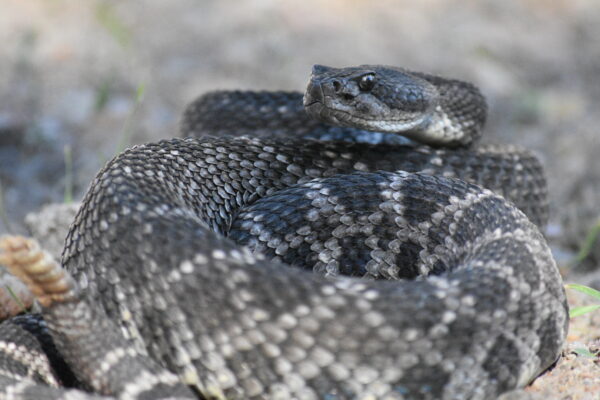
“Rattling Perceptions: Exploring the Social Lives of Rattlesnakes” with Chelsea Martin, herpetologist, behavioral ecologist, and Ph.D. candidate in Biology at Loma Linda University
Snakes are often perceived as unintelligent and unfeeling creatures. This is especially true for venomous snakes, which are often greatly feared but also greatly misunderstood. Research over the last few decades has revealed that snakes are more behaviorally and socially complex than previously assumed. In this talk, Chelsea Martin will explore the recent discoveries about the behavior and social lives of rattlesnakes that make them more similar to humans than previously assumed.
View LectureApril 2024

“Putting Science Behind the Stingray Shuffle and Other Observations with the Round Stingray” with Dr. Benjamin Perlman, full-time lecturer at California State University, Long Beach and principal investigator of the STABB Lab
Around the coastal United States, stingray strikes account for nearly 2,500 emergency room visits on an annual basis, in addition to the several hundreds to thousands of less-serious injuries that do not yield a trip to the hospital. Along California beaches, the Haller’s Round Ray (Urobatis halleri), is responsible for the majority of these interactions, with anywhere between 200 and 400 stingray-related injuries being reported each year from Seal Beach alone. During summer months, round stingrays aggregate in warm, shallow sandy-bottom areas along our coast, often coinciding with beach goers. While stingray strikes are generally non-life threatening, their barbs are capable of inflicting deep lacerations while potentially envenomating the victim. Despite the rate at which these encounters occur and the threat that they pose to public safety, very little is known about the behavior of these stingrays and their tail strike events. We use multiple high-speed cameras and motion tracking software to record and describe the tail strike behavior across the size range of the round stingray. This information, along with other experiments we are conducting in my lab with round stingrays, will provide applications relevant to beach safety.
View LectureMay 2024

“A Calendar of Color: The Art and Science of Catalina’s Flora” with Kevin Alison, Native Plant Manager at Catalina Island Conservancy
Artists, photographers, scientists, and nature lovers are drawn to Catalina for its astonishingly colorful beauty. Join us as we discuss the chromatic world of plants on Catalina and celebrate the island’s year-round displays of color.
View LectureJuly 2024
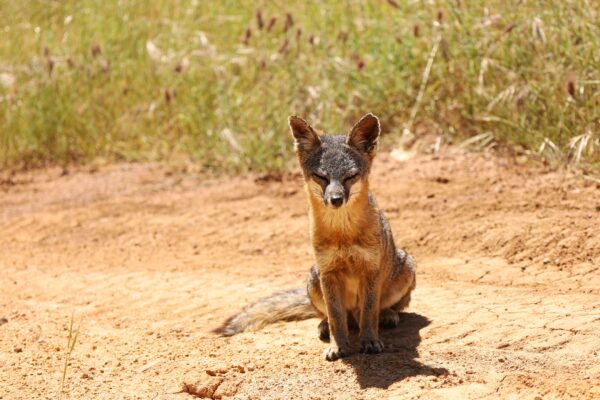
“The Catalina Island Fox: Endearing Endemics and What We Can Do to Protect Them” with Katie Elder, Wildlife Biologist at Catalina Island Conservancy
Join us as we dive into the fascinating world of the diminutive Channel Island foxes, found exclusively on California’s Channel Islands. This talk will cover the remarkable success stories of recovery programs that saved these unique canids from the brink of extinction and the ongoing efforts of the Catalina Island Conservancy and the broader fox community to ensure their continued health and survival. You’ll gain insights into the unique behaviors of these island endemics, the ongoing threats they face, and the actions we can all take to help protect them
View LectureAugust 2024
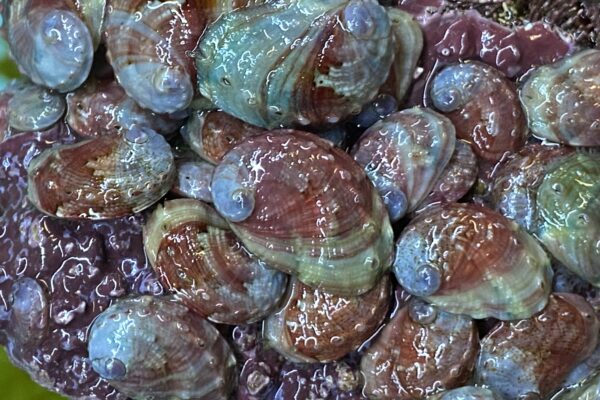
“Ocean Jewels Reborn: White Abalone Conservation and the Power of Partnership” with Johnathan Casey, Curator of Fish and Invertebrates at the Aquarium of the Pacific
This presentation will delve into the fascinating world of white abalone, exploring their ecological importance and the challenges they face due to population decline. By highlighting the Aquarium of the Pacific’s role in conservation-based aquaculture and outplanting efforts, as well as the unique successes and challenges in Southern California, we aim to inspire greater engagement in abalone recovery and marine stewardship through our collaborative efforts with conservation partners.
September 2024
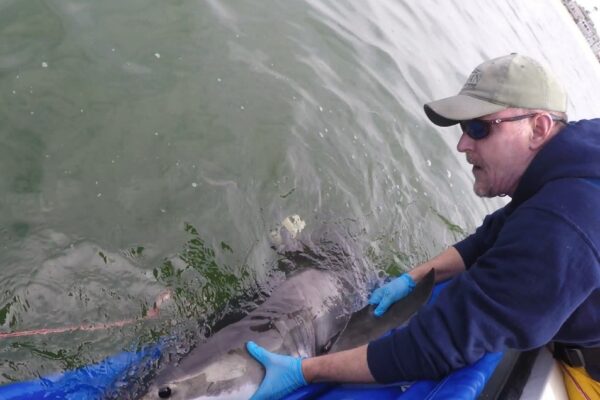
“Understanding California’s White Sharks: Research, Safety, and Coexistence” with Dr. Chris Lowe, Director of the Shark Lab at California State University
With the white shark population increasing due to successful conservation and management, increased shark activity along the CA coastline has raised public safety concerns. The CSULB Shark Lab has been studying white sharks for almost 20 years and in 2018 formed the CA Shark Beach Safety Program with funding from the California State legislature. New research has focused on population dynamics and behavior, particularly for juveniles that use coastal beach habitats as nursery. Research findings are dispersed to stakeholders (e.g., lifeguards, Harbor patrol, general public, K-12 schools) via large education and outreach program. Come learn about what we’ve discovered and how we’re learning how to live with white sharks off California.
2023 Recordings
January 2023
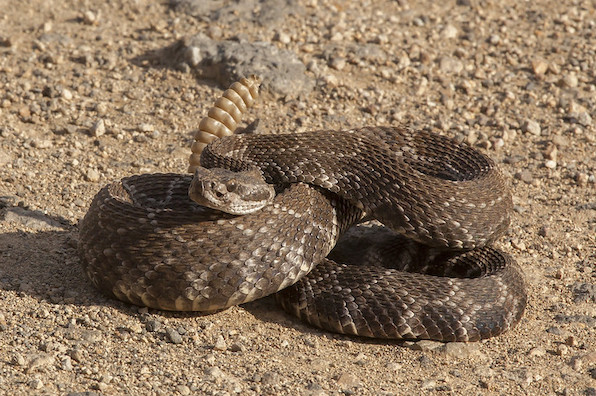
“The chemical weapons in snake-mammal warfare” with Matt Holding Ph. D postdoctoral research fellow at University of Michigan’s Life Sciences Institute.
Snake venom evokes both fear and fascination. Venom is a remarkable variable feature among individuals, populations, and species of snakes. I will discuss venom resistance in snake prey as a force of natural selection driving snake venoms to become different over evolutionary time, and highlight how mammals such as squirrels and other rodents have evolved incredible levels of natural resistance to snakebite.
View LectureFebruary 2023
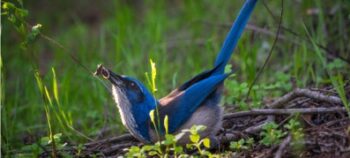
“Risks and benefits of reintroducing the Island-Scrub Jay to Santa Rosa Island” with James Mouton Ph. D , Ecologist, Smithsonian Migratory Bird Center.
Island-Scrub Jays are only found on Santa Cruz Island and face numerous threats including more frequent wildfire and infectious disease. Reintroducing Jays to nearby Santa Rosa Island may help make the species more robust to these threats. Here, we evaluate how such a reintroduction might impact the community of birds currently living there through.
View LectureMarch 2023

“Catalina’s Charismatic Herpetofauna” with Makenzie Henk M.S., Wildlife Biologist, Catalina Island Conservancy.
Santa Catalina Island is home to 12 species of native and non-native amphibians and reptiles. These species make-up an important part of the ecosystem acting as both predators and prey and bio-indicators for ecosystem health. Since the Catalina Island Conservancy was created 50 years ago, there have been only a handful of studies looking at species distribution and abundance across the island. In 2022 and 2023 the Conservancy started new surveys to learn more about these charismatic mini-fauna.
View LectureApril 2023
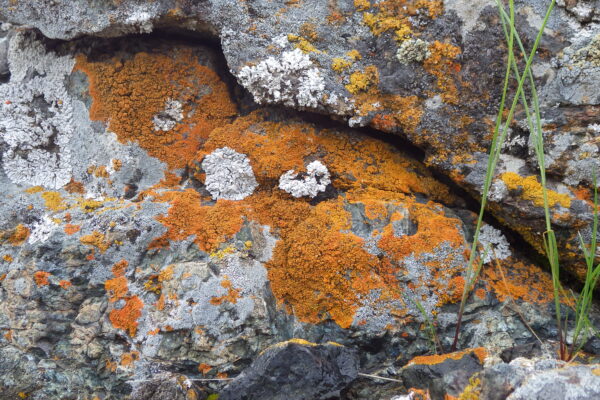
“Lichen are Fascinating Little Ecosystems” with Rikke Naesborg Ph.D., Tucker Lichenologist, Santa Barbara Botanic Garden
Lichens are everywhere, but they are often overlooked. California hosts around 2000 lichen species, spanning a fantastic array of colors and shapes. Join our foray into these fascinating little ecosystems.
View LectureJune 2023

“Catalina Island Marine Studies” with Karen Norris, Catalina Marine Society
Learn about ongoing and past research by the Catalina Marine Society and how scientific experiments on Catalina Island reveal important oceanographic results applicable to global concerns. This month’s speaker, Karen Norris, will cover these topics and dive into the concepts of ocean acidification and ocean warming to discuss how climate change may directly impact the ecology of Catalina Island waters.
View LectureJuly 2023

“Sunflower Sea Stars: Forging a Path to Recovery” with Ashley Kidd, Sunflower Sea Star Lab
It was the epidemic no one ever saw. By 2018, ninety-five percent of sunflower sea stars disappeared off the coast of North America in a staggeringly short 5 years. After a decade of living in California, the hypnotic kelp forests have compelled Ashley to work towards restoring these ecosystems, and is thrilled to share the story of a sea star that once roamed the nearshore waters off Catalina Island. The last time a sunflower star was observed in Southern California was 2014, and only a handful of stars have been observed since 2018 in northern California. Ashley looks forward to introducing you to the intrepid community of partners that are working towards a sustainable way to manage the return of sunflower sea stars to restore kelp ecosystems, and the mesmerizing life history of a sea star we didn’t know we didn’t know.
View LectureAugust 2023
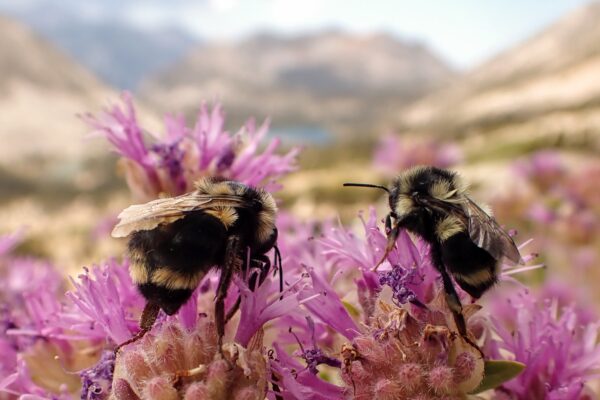
“California Bumble Bees: Ecology and Conservation” with Leif Richardson, Conservation Biologist, Xerces Society for Invertebrate Conservation
As pollinators of native plants, bumble bees play a key role in structuring ecosystems. Wild bumble bees also deliver the ecosystem service of pollination to agricultural crop plants, making them critical to human food production. These bees are negatively impacted by habitat loss, agricultural practices, and climate change, with one-quarter of species native to North America now threatened with extinction. California is a bee biodiversity hotspot, but systematic surveys to document bumble bees have never been performed here. The California Bumble Bee Atlas is a community science collaboration filling this gap, with volunteers gathering non-lethal survey data around the state, identifying species in need of conservation, and assisting partners with recovery efforts. In this talk, we’ll discuss the biology of bumble bees, why they are imperiled, and what you can do to help.
View LectureSeptember 2023
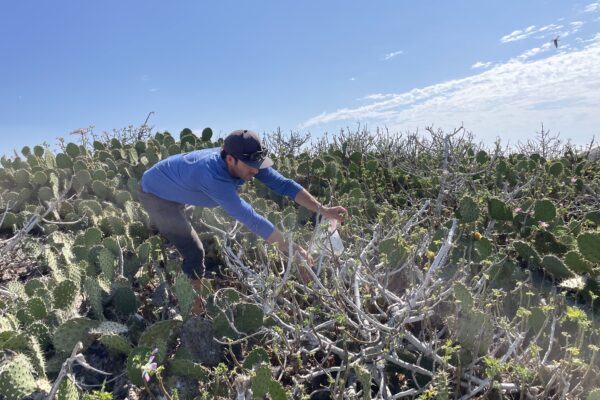
“Saving Catalina’s Rarest Plants” with Kevin Alison, M.SC., Rare Plant Ecologist, Catalina Island Conservancy
In this talk, Kevin Alison describes the methods used to grow and conserve rare plants on Catalina Island. Kevin will detail challenges threatening the survival of rare plants on the island and how the Conservation team responds with traditional and cutting-edge strategies to ensure these unique plants don’t go extinct.
View Lecture2022 Recordings
May 2022
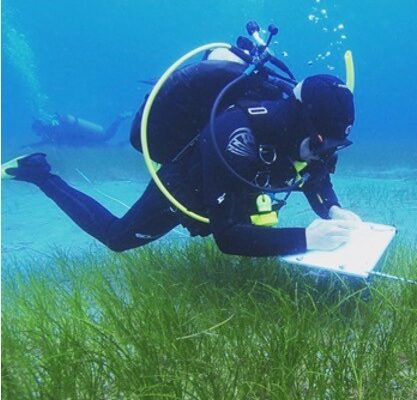
“Marine Biodiversity of Catalina Island” with David Ginsburg Professor of Environmental Studies University of Southern California
Catalina Island is home to the Blue Cavern Onshore State Marine Conservation Area (SMCA), which is recognized by California as a marine life refuge. Ginsburg and colleagues recently compiled a checklist of intertidal and subtidal marine macroalgae, seagrasses, invertebrates, and fishes documented from Blue Cavern Onshore SMCA (1,090 total species from 18 taxonomic groups). Among the marine taxa documented, 37 species either have undergone a geographic range shift or were introduced as the result of human activities, while another 4 species are listed as threatened, endangered or critically endangered. These findings provide an important baseline of species richness in the California Channel Islands and will help to improve efforts by resource managers and policy makers to conserve and manage similar habitats in the coastal waters off Southern California.
View LectureJuly 2022
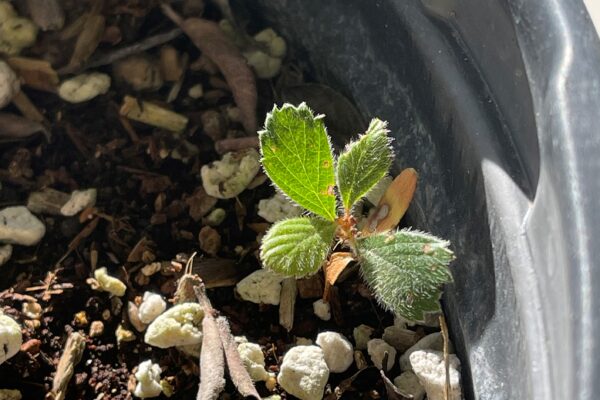
“Rare plant conservation on Catalina Island” with Roya Miller, Horticulturist, Catalina Island Conservancy
The Catalina Island Conservancy invests heavily in plant conservation through the three arms of the program: rare plants, restoration, and invasive plant mitigation. This talk will journey through the accomplishments, challenges, and lessons of all three – from propagating Island rush rose, to roadside weed abatement, and landscape level restoration. Conservation Horticulturist, Roya Miller, will provide an overview of her crew’s work in these arenas and discuss the next steps for the plant program.
View LectureAugust 2022
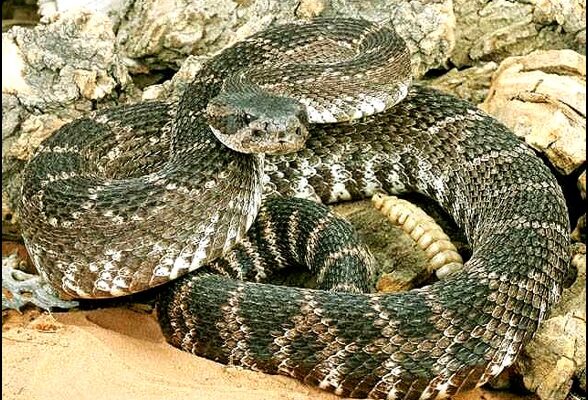
“Co-existing with the Southern Pacific Rattlesnake on Catalina Island” with William Hayes, Professor of Biology, Loma Linda University
Catalina Island’s population of the Southern Pacific Rattlesnake differs somewhat from those on the mainland, being smaller in size. This follows the standard pattern of evolution on islands. Animals on islands are also usually tamer because fewer predators are present. However, the Southern Pacific Rattlesnakes on Catalina Island vigorously defend themselves from attacks. What causes this unusual behavior? Can we learn to co-exist safely with these important components of Catalina’s unique ecosystems?
View LectureSeptember 2022
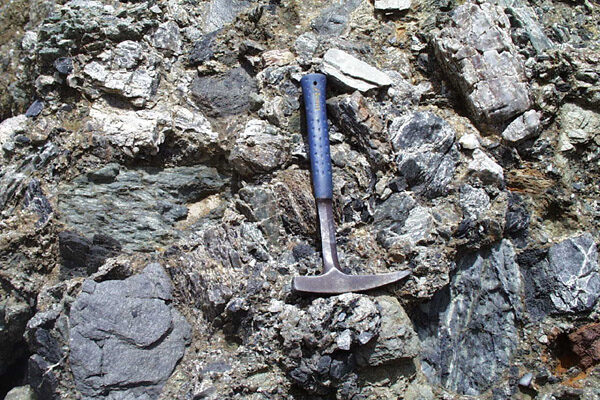
“The Rocks of Catalina Island — Messengers from the Abyss” with Paul Asimow, Professor of Geology, California Institute of Technology
Santa Catalina Island offers the chance to see a series of rocks that are at the same time both unique and general — as the best exposures above sea level of the Southern California Inner Borderland terrain and also as preserved examples of the rocks that form wherever and whenever oceanic and continental plates converge. We will review the significance of the major rock types that can be seen around Catalina, their mineralogy, their ages, and the structural relations between them. Then we will put them together into a story of the development and evolution of the West coast of North America over the last 125 million years.
View LectureOctober 2022
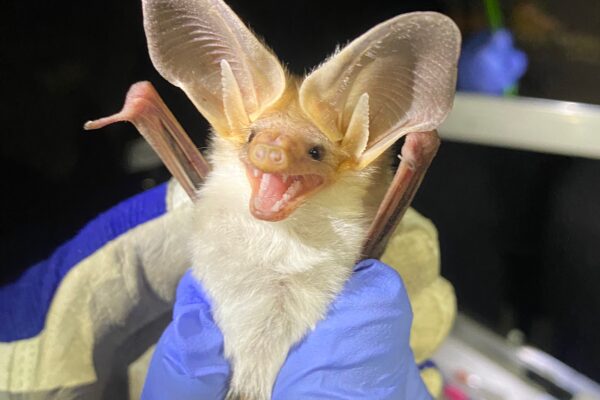
“Bats of Catalina” with Joseph Curti, Ph.D Student, University of California Los Angeles
Join UCLA researcher Joseph Curti to learn which bats are on Catalina, their ecology and natural history, and what he hopes to learn in his research on Catalina. This will be followed by a look at a short bat film put together by Curti and Aaron Lemle, a film student at UCLA. The film is the story about a young man who goes on a quest to understand the disappearance of bats under a bridge near his house, enlisting a UCLA biologist along the way.
View Lecture2021 Recordings
January 2021
“Biosecurity for Catalina: Protecting the island from new invasive species” with Juli Matos, Biosecurity Manager, Channel Islands National Park
Join us as we learn how prevention is the most effective approach for invasive species management! By preventing new invasive plants and animals from being introduced to Catalina, we can protect this unique Island environment and economy from their impacts.
View LectureFebruary 2021

“Shorelines past, present, and future- Gateways to the submerged heritage of humanity” with Lynn Dodd Ph. D, Professor, USC Wrigley Institute
For tens of thousands of years, changing sea levels have submerged coastal villages, work sites, and burial places on Santa Catalina (Pimu) Island, along the California coastline, and globally. The ocean, rivers and lakes of California contain more traces of human history than all its museums combined. With this awareness, the enormous implications of changing sea levels for coastal planning, land use, tourism, recreation, and development are coming into sharp focus. In this time together, we’ll investigate what we know now about ancient or paleo-shorelines in Catalina and California, how this island has–and hasn’t–changed, and what we can learn about our human past and future by looking closely at Santa Catalina island on the easternmost edge of the great Pacific Ocean.
View LectureMarch 2021
“Southern California Geology” with Nate Onderdonk Ph.D., Professor, CSU Long Beach
The geology of Catalina Island holds valuable information about the development of the tectonic plate boundary in California. In this talk, Nate Onderdonk presents a simplified version of the geologic history of Catalina Island with an emphasis on how the island fits into the tectonic history of Southern California. See how the rocks on Catalina are a continuation of the rocks on the mainland, but provide a valuable offshore data point for piecing together some incredible and unique stories about the often messy process of plate tectonics.
View LectureApril 2021
“Conservation of Island Foxes” with Brian Cypher Ph.D., Ecologist, CSU Stanislaus
The diversity and abundance of food resources are naturally limited on islands. For island foxes, food security is greater on larger islands with more biotic diversity, such as Santa Catalina. However, food availability is only one of the challenges for island foxes. Despite recent recovery success, island foxes will always be a “conservation reliant” species.
View LectureMay 2021
“Nature Journaling Basics: The What, Why, and How of Keeping Your Nature Journal” with John Muir Laws, Educator
Nature journaling is one of the best ways to enhance your observation, connection, and love of the natural world. Join John Muir Laws and the Catalina Island Conservancy for a virtual introduction to nature journaling. Learn the what, why, and how of keeping your nature journal. This talk will explore simple techniques to record the landscape and endemic species of Catalina Island with words, pictures, and numbers.
View LectureJuly 2021
“Darkness at Noon: Prehumans, Humans and the Collapse of Island Faunas” with Ross MacPhee Ph. D Senior curator in residence, Department of Mammalogy at the American Museum of Natural History
The land areas worst affected by terrestrial extinctions during the past 1 million years are islands. Almost all islands that humans have historically inhabited have suffered major losses—some up to 100% of insular representatives of certain groups, such as land mammals. This talk will present a global survey of vertebrate extinctions on islands since the appearance of anatomically modern people, with an emphasis on apparent causation.
View LectureAugust 2021
“Unique Rocks of Catalina Island” with John Turbeville, Professor, Mira Costa College
Catalina Island has a unique geology and rocks that are very different when compared to the general Southern California Region. The uplift of the Island is from a transpressional or strike slip fault complex similar in motion to the San Andreas Fault, where bends and turns in the fault create the uplift and downdrop of very large blocks. This uplift exposes a unique and complete sequence of rocks not seen in Southern California. They are metamorphic (changed form) from a subduction zone where tectonic plates collide and create higher pressures than normal, then they were uplifted some 40 km to be exposed on the island.
View LectureSeptember 2021
“California Fires and Ecological Impacts” with Jon Keeley, Senior ST Research Scientist, U.S. Geological Survey
Since the introduction of aggressive invasive annual grasses and forbs in California there has been widespread vegetation type conversion. This has been particularly marked in perennial grasslands, coastal sage scrub and chaparral. Increased fire frequency, over-grazing, severe droughts and climate change have been implicated in type conversion. Short-intervals between fires have been shown to play a key role in this process, however, some studies have questioned this conclusion and a number of studies have shown other factors at play. This presentation will focus on parsing out the role of fire intervals, site aridity, droughts and global warming in driving these transitions.
View LectureOctober 2021
“Sustainable Groundwater Management: A Key to Drought Resilience” with Thomas Harter, Professor, UC Davis
View LectureNovember 2021
“Gabrielino-Tongva Cuture Throughout Time” with Desiree Martinez, Cogstone Resource Management and Pimu Catalina Island Archaeology Project
Join us to hear from a key member of the Pimu Catalina Island Archeology Project to better understand the traditions and important lessons that we can learn from the indigenous people of the Los Angeles Basin and the southern Channel Islands.
View Lecture2020 Recordings
July 2020
“Improving Weather Forecasts for Enhanced Water Supply in Southern California” with Forest Cannon, Ph.D., Scripps Institute of Oceanography
Southern California rainfall and snowmelt play an important role in regional water resources, and improvements in their capture are essential to reducing dependence on imports from northern California and the Colorado River. This talk will describe ongoing efforts to understand and improve precipitation forecast skill in Southern California with the goal of providing advanced decision support information to regional stakeholders and water management agencies looking to increase reservoir water supply reliability while simultaneously mitigating flooding hazards. A key component of this work is the installation of weather observing systems at the University of Southern California Wrigley Institute for Environmental Studies’ Wrigley Marine Science Center that, alongside other instrumentation in the Los Angeles basin and surrounding mountains and airborne reconnaissance efforts offshore, help to constrain forecast models. This talk will give an overview of why Catalina Island is an ideal location for weather instrumentation and how each of the different instruments recently installed by the Center for Western Weather and Water Extremes are being used to improve regional forecasts.
View LectureAugust 2020
“The Role of Hummingbirds in Island Food Webs” with Erin Wilson Rankin, Ph.D., Associate Professor of Entomology, University of California Riverside
View LectureSeptember 2020
“Moomat Ahiko: Breath of the Ocean” with Cindi Alvitre, American Indian Studies & NAGPRA Coordinator at CSU Long Beach and Co-Founder, Ti’at Society
In 1996, the crew of the first Gabrieleno/Tongva ti’aat (canoe) in over two hundred years navigated Moomat Ahiko along the coast of Catalina Island, where she was greeted by her descendants and the generous community of Avalon. This event unveiled the revival of a maritime tradition that was considered to be extinct. The journey to this moment is a story is one of how dreams become prophetic in the present. The island somehow becomes the lieux de memoire’ a place of memory in which cultural transformation come alive, and the ti’aat a vessel that contains lessons and knowledge for all citizens of our ocean. This presentation will present the history of the sewn plank canoe and how a ti’aat returned to the people – just in time!
View LectureOctober 2020
“Is Community Science the Next Revolution in Conservation, Behavior, and Ecology?” with Greg Pauly, Co-Director, Urban Nature Research Center and Curator of Herpetology, Natural History Museum of Los Angeles County
For centuries, natural history discoveries have been made by members of the public. The professionalization of natural history research is a relatively recent development. Professional scientists, however, are now recognizing that many questions, including understanding some of the greatest global threats to biodiversity, can only be answered through large-scale efforts in which professional scientists partner with members of the public. These new citizen science efforts can answer basic and applied research questions across the fields of ecology and behavior. This talk will demonstrate three ways in which, through the help of thousands of dedicated naturalists, the Reptiles and Amphibians of Southern California (RASCals) Project is allowing us to make discoveries that were not possible through other methods. These discoveries include 1) documenting and tracking invasive species: 2) assessing how parasitism and predation vary along urban to rural gradients; and 3) documenting rarely observed natural history events such as mating behavior.
View Lecture
November 2020
“From the Field to the Genetics Lab: The Remarkable Flora of Santa Catalina Island” with C. Matt Guilliams, Ph.D., Ken & Shirley Tucker Plant Systematist, Santa Barbara Botanic Garden
The plants of Santa Catalina Island have captured the imagination of botanists for well over a century, but recent work has provided exciting new insights and island- and archipelago-wide floristic synopses. This talk will discuss the remarkable flora of the California Channel Islands, often referred to as ‘California’s Galapagos,’ with an emphasis on Catalina Island. Work in the field and herbarium over the last two decades has resulted in a fresh understanding of the flora of the Island. This floristic work has been deepened by the recent application of genetic techniques to the study of plant biodiversity at all levels, from population genetics to phylogenetics of the entire Channel Islands flora.
View Lecture

